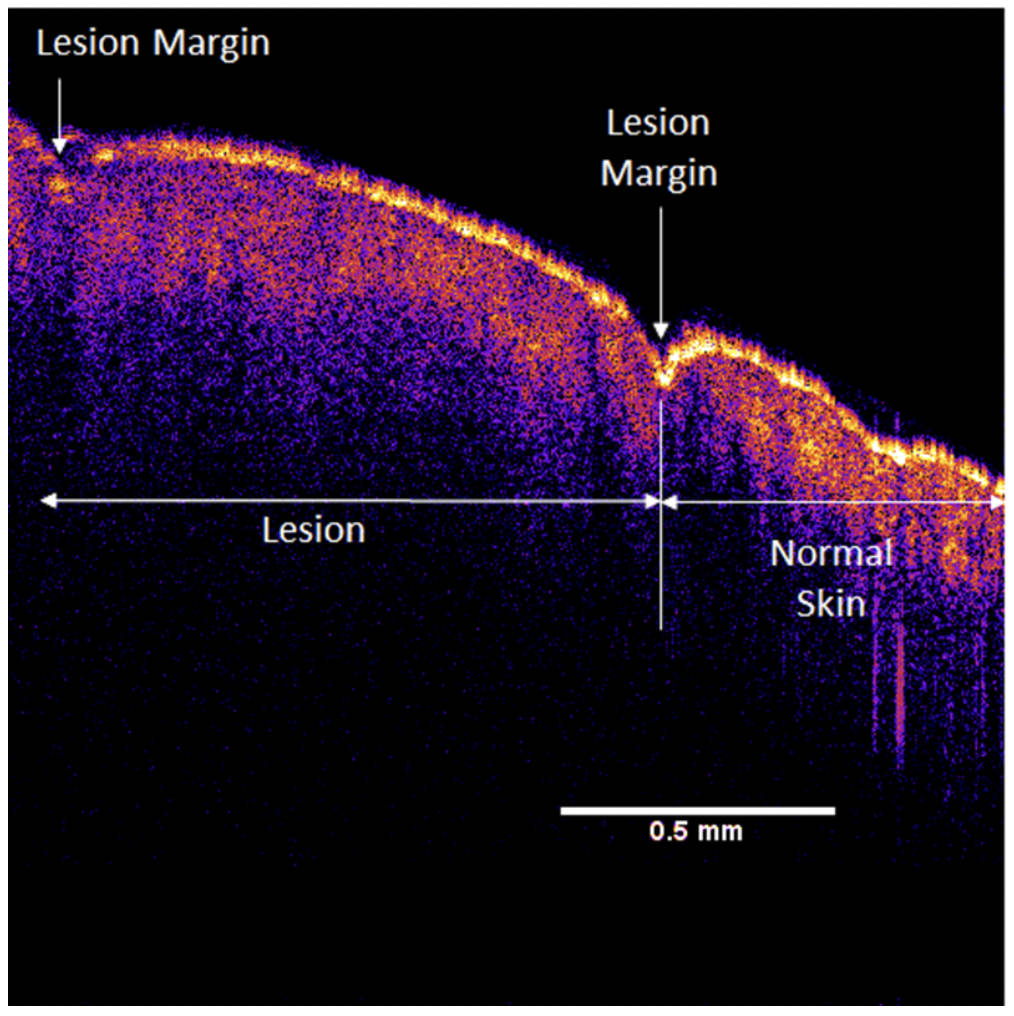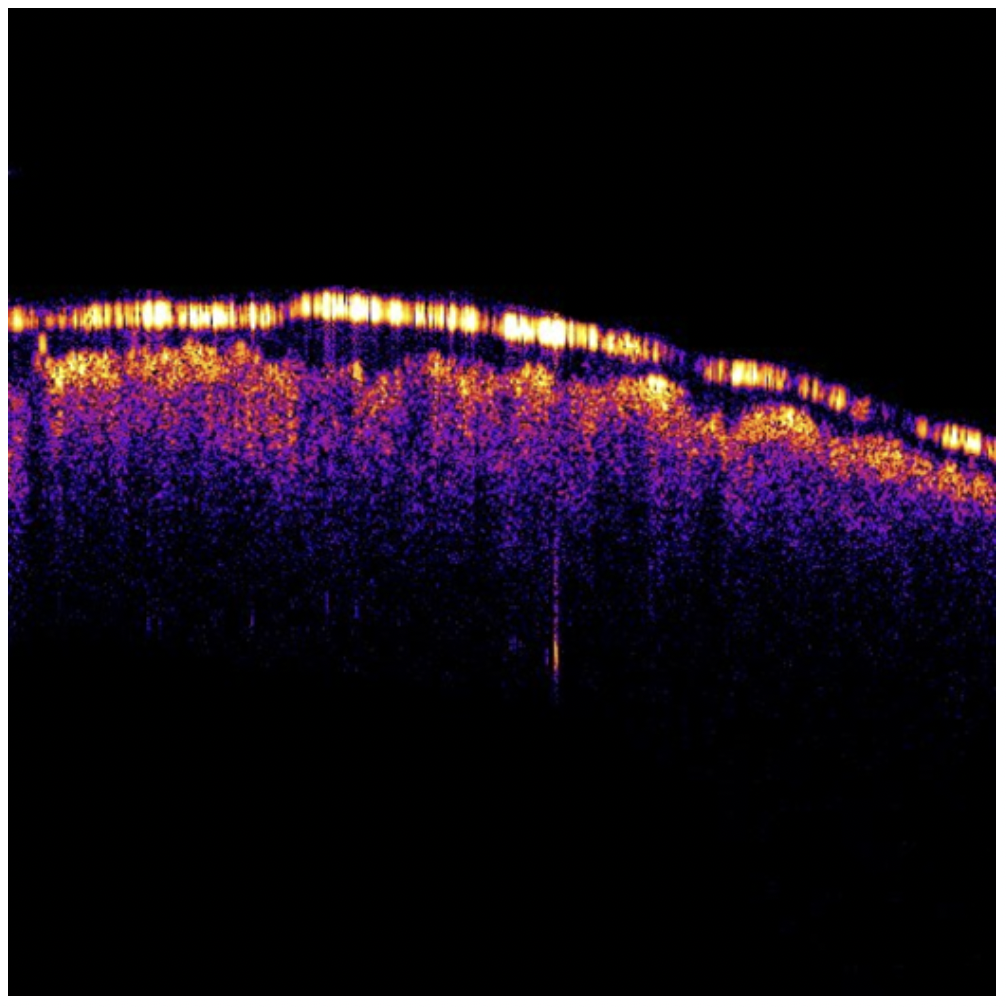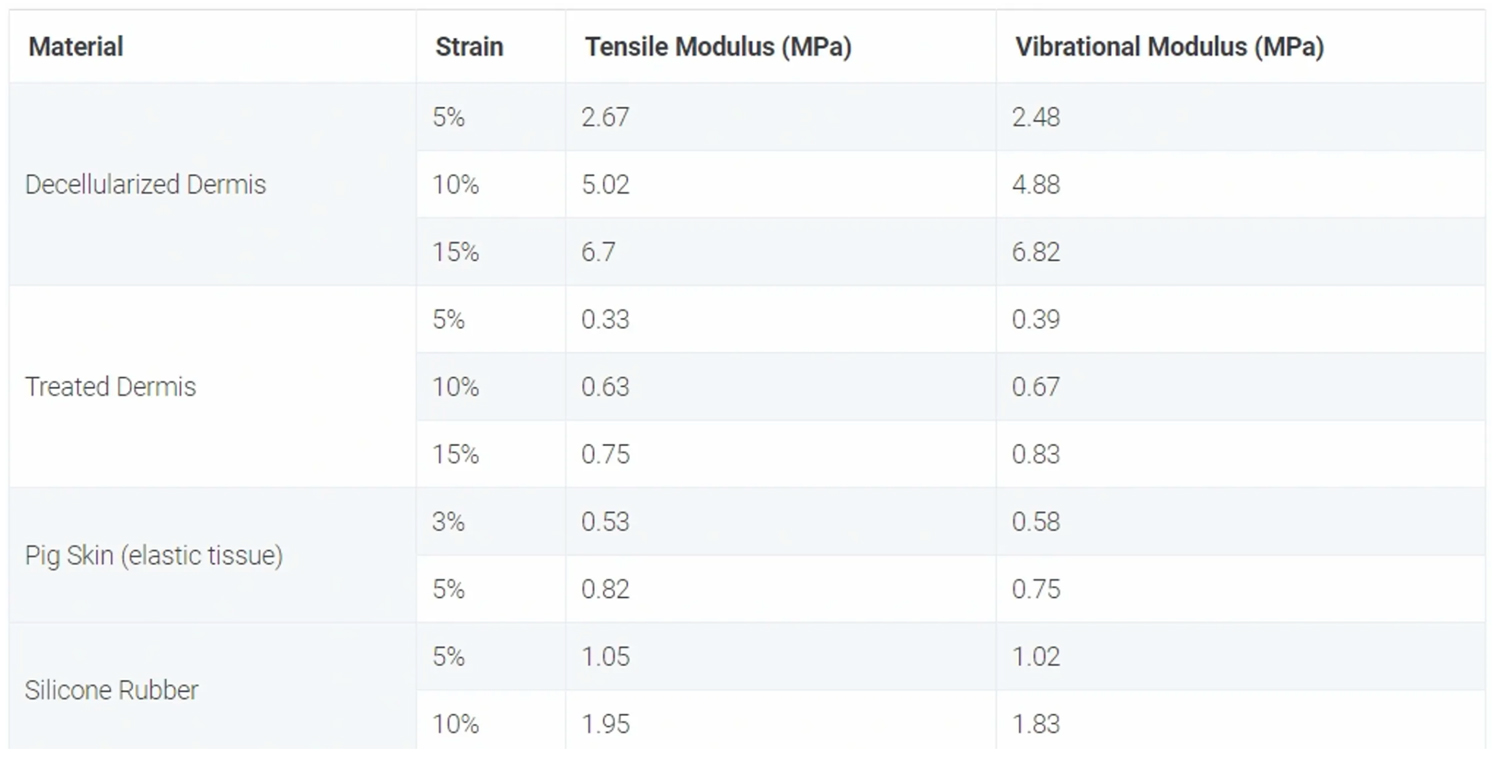MATCHING HOST TISSUE AND IMPLANT MECHANICAL PROPERTIES

Enhanced OCT Image of scar (lesion) and normal skin using the Vibrational OptoScope

OCT Enhanced Image of Salicylic Acid Pealing of Skin Epidermis
Modulus is the degree to which a material possesses a property (such as elasticity or viscosity). Measuring the modulus reveals the point at which the molecules or atoms inside a material will begin to deform. In other words, what is the stress point of a particular material or is there a “weak spot” within that material that may break down sooner than expected.
Modulus mismatch between host tissue and implant material contribute to implant failure. Corrective surgeries need to be performed as a result of the modulus mismatch at the interface.
The use of vibrational Optical Coherence Tomography (VOCT) can help image and measure the mechanical properties of numerous natural and synthetic polymers.
Failure that occurs in hernia, vascular and orthopedic applications can be understood with this imaging and characterization. Animal sacrifice in preclinical studies can be prevented and a reduction in the number of biopsies that need to be performed could be achieved with the use of VOCT.

The table consists of different samples and their modulus, measured both with the help of a VOCT device (Vibrational modulus) and with the gold standard tensile testing (Tensile modulus). The Vibrational modulus is seen to be comparable to the tensile modulus.